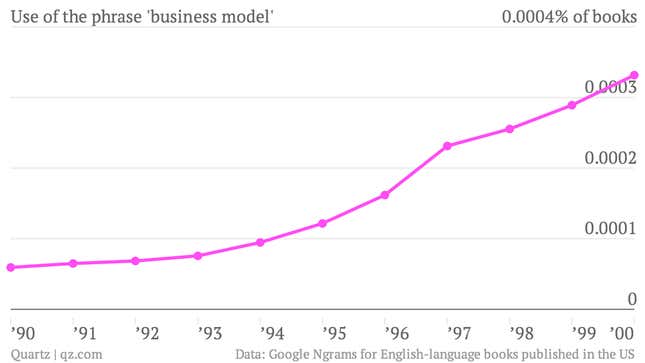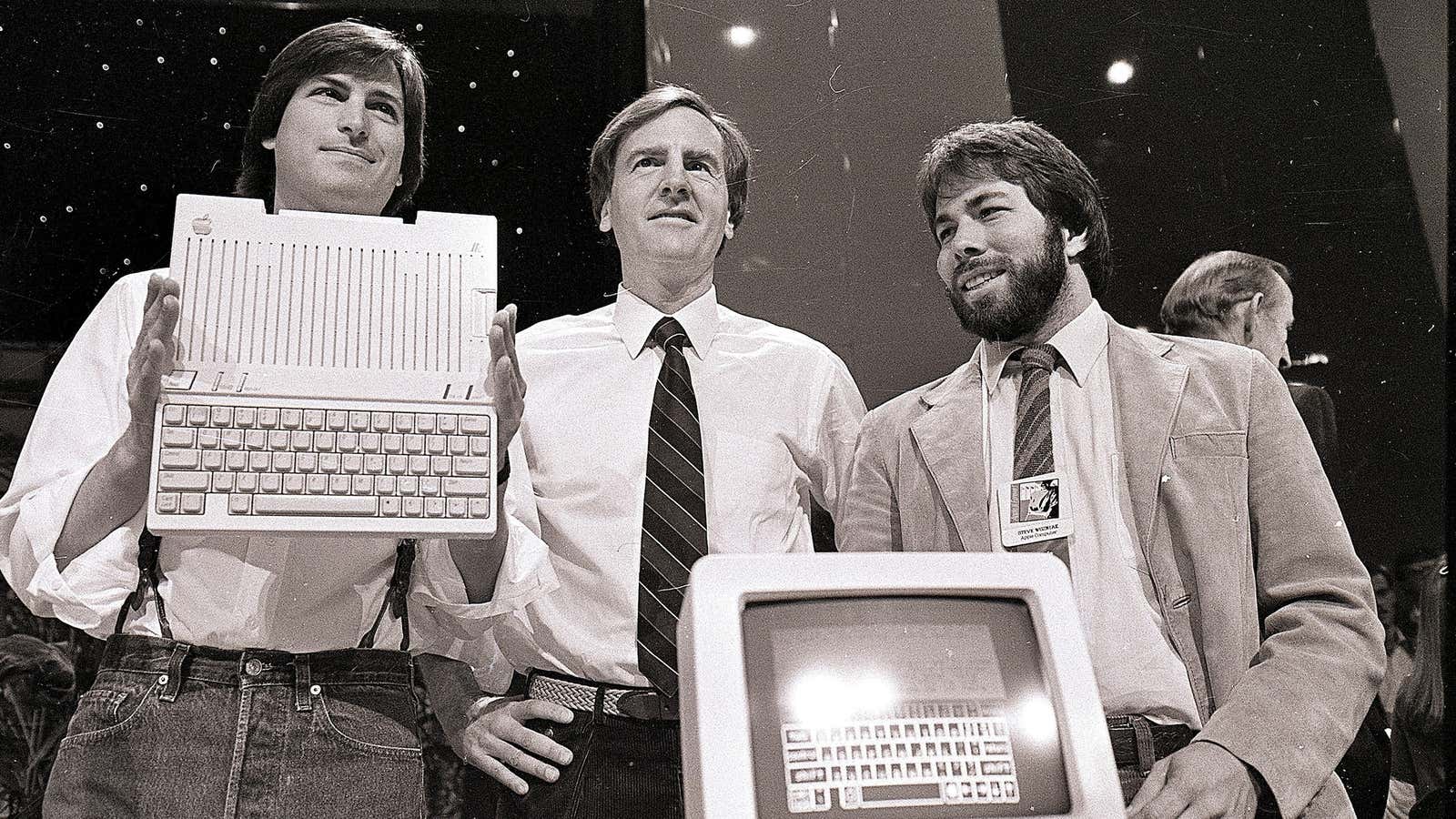Before the late 1990s, no one was using the phrase “business model.” Or at least, it hardly appeared in written form. The phrase has since morphed, subtly but quickly, from an abstract theoretical term to one with animate, even living connotations. This linguistic shape-shifter has the capacity to tell us something about the idiosyncrasies of business language.
Corpus linguistics—the study of large bodies of published text to find language usage patterns—has become much easier to do since Google launched its Ngram Viewer. It’s a nifty toy for analyzing lots of words from lots of books. The Ngram Viewer pulls data from more than eight million books, and really flexes Google’s big data muscles. It also makes for a fantastic Tumblr project. And when you put the phrase “business model” into it, you get this result:

When Quartz contacted Dr Justyna Robinson, a semantic linguist from Sussex University with a background in management, she was just as surprised as us to hear that “business model” wasn’t much used before the 1990s. After analyzing a number of other corpa, including the Oxford English Dictionary, Robinson confirmed the Ngram findings. “Business model” really hadn’t entered common usage until the mid-1990s.
Of course a change in how often a word or phrase is used can only tell us so much. Robinson dug a little deeper, examining the adjectives most often used together with “business model”, and discovered that the context of the phrase—the kinds of texts in which it appears and the way it is used—has also changed. In the 1990s, adjectives such as “basic,” “new” and “sound” were the commonest, but by 2006 “viable,” “lucrative,” “efficient” and “workable” topped the list.
Robinson then looked at the noun’s associated modifiers—what the phrase “business model” can do and what’s being done to it. In the 1990s, a business model could “provide,” “serve” and “adopt”. By the 2000s it “proves,” “requires” and “works”. It also “collapses” and “is dead”. It has moved, in other words, from being a novel, intangible concept to something more concrete. “It’s metaphorized as a building which can collapse. It’s also understood as something more organic, which can die,” Robinson said.
It’s odd that the phrase is so recent a construction when the thing it describes—how to structure an endeavor so as to make money from it—has been around for aeons. So before the mid-1990s, when people talked about making strategies and plans for their businesses, what did they say if not “business model”?
According to Google Ngram data, “business plan” appeared 14 times more frequently than “business model” in 1990, and “business strategy” eight times more frequently. By 2008, the latest year available, “business model” is nearly as common as “business plan.” (We can’t show you a chart of this, because the way Google compiled its data makes a continuous series over that period misleading.)
So there must be something about the word “model” specifically that caused its rise in popularity.
“In management there’s a lot of old wine in new bottles,” Eric Abrahamson, who studies management trends at Columbia Business School, told Quartz. Buzzwords are recycled and repurposed in much the same way as fashion trends. Abrahamson says it’s important to look under the label at what the buzzword actually means. When a variant on a phrase emerges, it’s usually because a new problem has appeared and a new solution needs to be found.
“You use the word model when you have something complicated you want to simplify,” says Allan Afuah, who teaches strategy at Michigan Ross School of Business. Afuah believes the proliferation of the phrase came about during the dotcom boom because this was a time when people were looking for a clear framework for making money.
Of course, there is another possible explanation for why “business model” became more common, and it’s rather more boring: that more management books appeared at the tail end of the 1990s. More books about business would mean more instances of business models. But looking at another dataset of texts, or corpus, seems to suggest this isn’t the answer.
Mark Davies from Brigham Young University compiled his own corpus of 450 million words from American English sources between 1990 and 2012, The Corpus of Contemporary American English (COCA). Although it is much smaller than Google’s corpus, the words in the COCA can be broken down by the types of texts in which they appear. So it’s possible to see where the word is appearing—in academia, fiction or news publications.
Using this corpus, Dr Robinson was able to chart changes in the distribution of the phrase “business model” over time. Between 1990-1994, eight out of the 14 entries for “business model” appeared in academic texts and the other six in the media. But between 1995 and 1999 there was a nearly a 90% increase in its use in the media compared to the previous five years. Though it’s a small sample, it suggests that the phrase was entering the mainstream.
Afuah, similarly, said that while the phrase had been around earlier (he distinctly remembers using it while studying for his MBA in the 1980s), no-one was writing about it until the late 1990s. He suggested the rise in business news publications as an explanation for its increase in usage.
Have your own theory about business models? Send them to us: hi@qz.com
